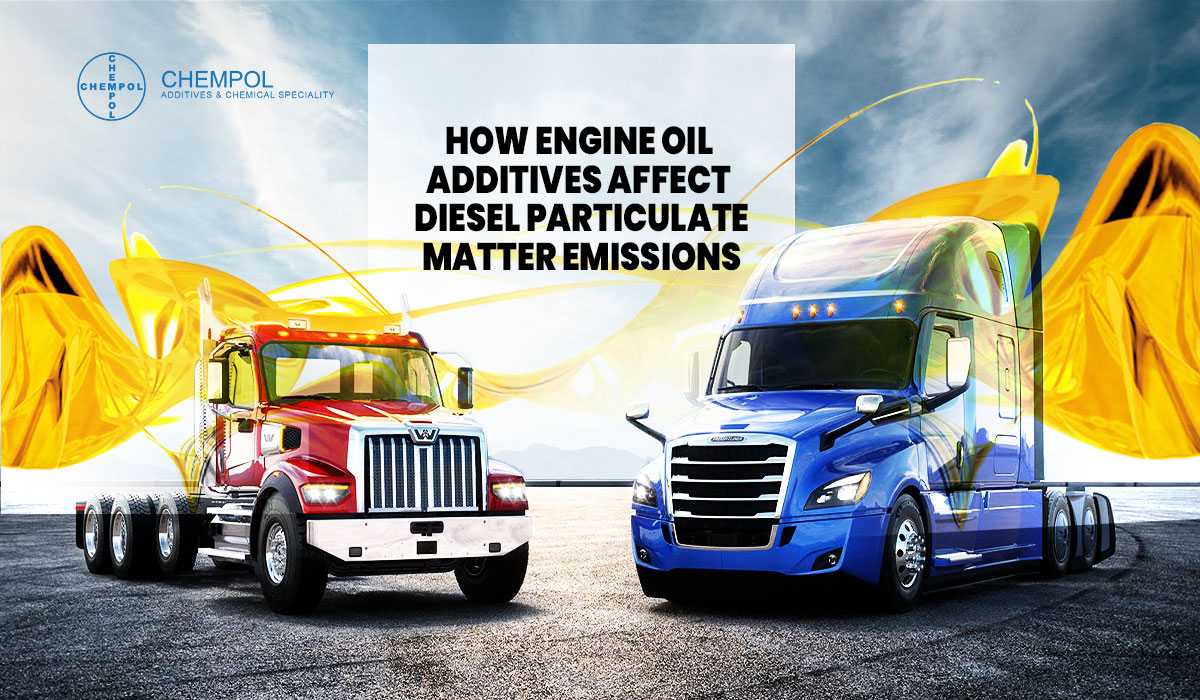
How Engine Oil Additives Affect Diesel Particulate Matter Emissions
Diesel engines are extensively operated in many different industries, including transportation and power production, because of their great power, efficiency, and dependability. However, diesel engines can also release toxic pollutants, such as particulate matter (PM), which can harm the environment and human health.
These engines release gas-containing particulate matter (PM), a combination of liquid and solid particles. Particulate matter has three characterizations into three size ranges:
- Coarse mode (more than 250 nm)
- Accumulation mode (50-250 nm)
- Nucleation mode (less than 50 nm)
Numerous variables, including fuel quality, engine design, operating circumstances, and emission control technology, affect PM’s size, quantity, and composition.
The composition of the best oil additives for diesel engines is one of the variables that might affect PM emissions from diesel engines.
Engine Oil With Additives Are Effective On Many Scales

Engine oil is a lubricant that lowers wear and friction between the engine’s moving components. In addition, engine oil cools, cleans, seals, and shields the engine, among other things. Engine oil comprises a basic oil and many additives that improve its characteristics.
Special additives which are present in the basic oil enhance its longevity and performance. Antioxidants, anti-wear additives, dispersants, detergents, pour-point depressants, viscosity-index improvers, and anti-foaming agents are a few types of engine oil additives.
Engine Oil Additives May Impact Diesel Engine PM emissions In A Number Of Ways
#1- Controlled Emission Rate
First, engine oil additives may impact the engine’s oil consumption rate. Oil consumption means the quantity of oil lost from the engine due to evaporation, leakage, or combustion. Oil consumption might increase PM emissions by creating nucleation mode particles during the engine cycle’s expansion stroke. Unburned hydrocarbons and metal compounds from the engine oil additives make up most of these particles.
#2- Oxidation Stability
Secondly, adding special chemicals or additives impacts the oxidation stability of engine oil. Oxidation stability is the other name for the oil’s capacity to withstand oxidation and high temperatures. Increased oil viscosity, foaming, metal component corrosion, sludge, and varnish production are all possible effects of oxidation. Oxidation may also impact PM emissions by causing an increase in the quantity and size of accumulation mode particles—created when nucleation mode particles aggregate. The gasoline and motor oil additives’ carbonaceous soot and ash comprise most of these particles.
#3- Physicochemical Characteristics
Third, engine oil additives impact the physicochemical characteristics of PM. The shape, size distribution, mass concentration, number concentration, elemental composition, and surface chemistry of PM are examples of its physicochemical features. These characteristics may influence the PM’s toxicity and environmental effects.
Necessary Things To Take Care

It is crucial to characterize the PM properties as well as the engine oil formulation to understand how engine oil additives impact PM emissions from diesel engines. A substance’s numerous properties and traits are measured and analyzed as part of the characterization process. Manufacturers and industries bring in new and different approaches or techniques appropriate for diverse applications and goals that determine the characterization. For instance:
Techniques including spectroscopy, chromatography, microscopy, viscosity testing, acid-base titration, thermogravimetric analysis (TGA), and X-ray fluorescence (XRF) can characterize the engine oil formulation. These techniques and methods find the kind, grade, quality, composition, and characteristics of the additives and base oil.
Other techniques to characterize the PM emissions from diesel engines are differential mobility spectroscopy (DMS), scanning electron microscopy (SEM), X-ray photoelectron spectroscopy (XPS), gravimetry, and particle size analysis. These techniques may provide details on the PM’s shape, elemental composition, number concentration, mass concentration, and size distribution.
One may determine the impact of various engine oil additive benefits on diesel particulate emissions and create a link between them by characterizing the PM emissions from diesel engines as well as the engine oil formulation.
Different Researches Determined The Particulate Emission

A recent research by Kim et al looked at how a light-duty diesel engine’s PM properties were affected by the composition of the engine oil. They picked A 1.6 L Euro-5 diesel to serve as the test engine running at low to high speeds and with heavy loads. They came out with the following tests:
- They analyzed the effectiveness of specially prepared non-additive, including real and base oil.
- Physicochemical analytical methods were carried out on engine oil formulation, oil flushing, PM sampling, morphology, and particle component identification with the purpose of characterizing diesel PM.
- DMS assessed the size-resolved particle number (PN) concentration at the engine-out position.
- The concentration of nucleation mode particles from real oil was greater than that of base oil when they originated from engine oil consumption during the expansion stroke.
- SEM and XPS methods for the analysis of morphological patterns and atomic compositions of engine oil additives.
BASED ON THE SEM Analysis
THE spherical PM of nucleation and accumulation mode particles were agglomerated on a quartz filter. The PM sample from real oil manufacturers in UAE showed higher oil additive percentages of Ca, P, and Zn in the XPS spectrum.
To conclude, the exhaust gas stream’s additive metal compositions, shape, and PN emissions created from engine oil were significantly influenced by variations in the physicochemical qualities of the oil as well as the number of additives used.
According to this research, diesel oil additives may significantly impact diesel engine particle emissions. Because of this, it’s critical to choose the appropriate kind and quantity of engine oil additives for various diesel engines and operating environments. Diesel engines may benefit from engine oil additives in a number of ways, including increased longevity, performance, and engine cleanliness. Nevertheless, there are drawbacks to engine oil additives as well, such as increased expense, complexity, and environmental effects. Thus the user should carefully choose the engine oil additives and optimise them to strike a balance between the advantages and the disadvantages.


